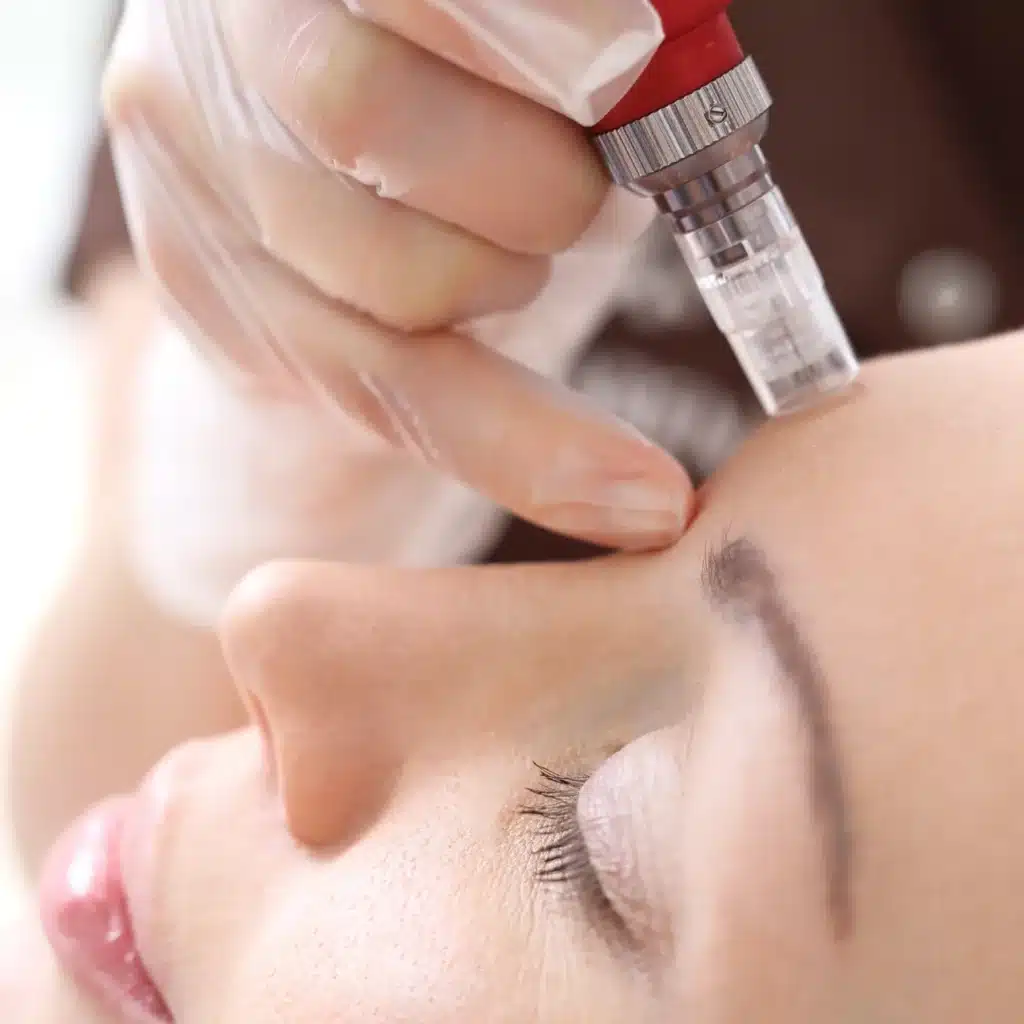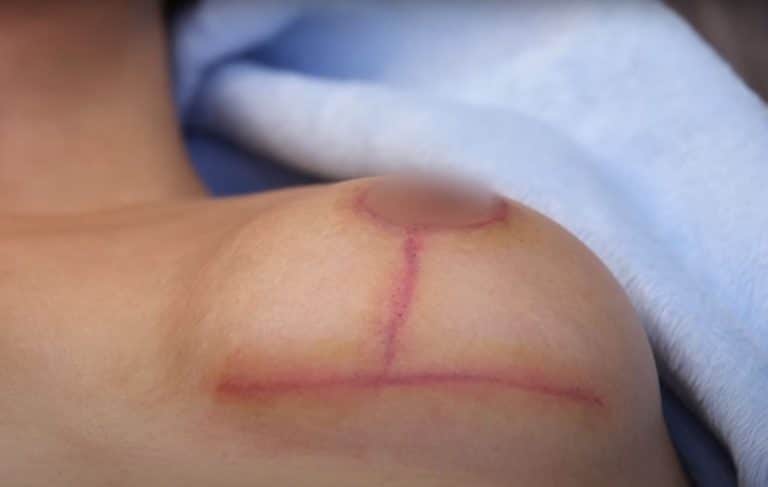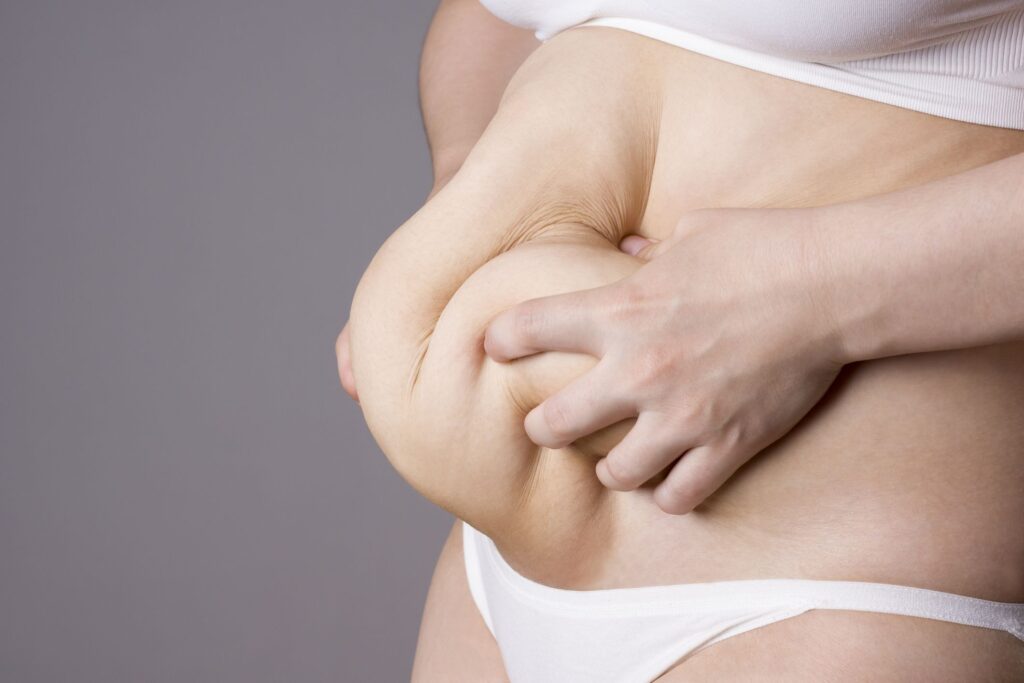Overview of Body Contouring
Body Contouring Defined
Body contouring involves surgical and non-surgical procedures, including breast lift and treatment sessions, to reshape areas of the body such as the buttocks, using specific incision patterns. It aims to remove excess skin and fat from the buttocks and breast lift, improving the overall appearance and contour for those at a healthy weight. This process is crucial for people after losing significant pounds or those dealing with the natural aging process, targeting fat cells through heat treatments.
Individuals turn to these procedures, including heat treatments in certain areas, to achieve a more defined and aesthetically pleasing body shape while maintaining a healthy weight. Invasive and non-invasive techniques are both popular options, depending on the patient’s needs and recovery time preferences.
Importance for Individuals
For many, body contouring is not just about aesthetics but also about addressing health concerns, including the reduction of fat cells and potential side effects. Excess skin from obesity, pregnancy, or genetic conditions can lead to discomfort and hygiene issues, side effects of the body’s invasive response to stretched skin and fat cells.
Removing this skin reduces these risks and improves quality of life. It’s particularly important for those who have lost a large amount of weight, shrinking fat cells, and want to complete their transformation by getting rid of loose skin.
Psychological Benefits
Undergoing body contouring, which targets fat cells, can lead to significant improvements in self-esteem and mental health. Patients often report feeling more confident in their appearance post-procedure.
This boost in confidence can impact various aspects of life, from personal relationships to professional opportunities. The psychological benefits are a key factor why many choose to undergo these procedures.
Physical Comfort
Beyond aesthetics, body contouring offers practical benefits related to physical comfort and mobility by reducing fat cells. Removing excess skin and fat cells can alleviate chafing and irritation, making daily activities more comfortable.
Patients also find it easier to engage in physical exercise after contouring procedures, which remove fat cells, leading to a healthier lifestyle overall. This aspect highlights the procedure’s role in enhancing not just appearance but overall well-being.
Types of Body Contouring
Surgical Options
Surgical body contouring procedures offer dramatic results by removing excess skin and fat. These methods often involve incision patterns tailored to the specific area being treated, targeting fat cells and ensuring optimal outcomes.
Abdominoplasty, or a tummy tuck, targets the abdominal area. It removes excess skin and fat while tightening muscles. This procedure is ideal for individuals with sagging tissues after pregnancy or significant weight loss.
Breast reduction addresses oversized breasts, often laden with excess fat cells, that may cause physical discomfort. It reduces breast size, alleviating back and shoulder pain. The surgery also lifts the breasts, improving their shape and position.
Brachioplasty, or an arm lift, eliminates loose skin and fat cells from the upper arms. It’s suited for those who have experienced massive weight loss leading to skin laxity. The result is more toned and contoured arms.
Non-Surgical Methods
Non-surgical body contouring options provide less invasive alternatives for minor adjustments and fat reduction.
Laser treatments use targeted heat to destroy fat cells without damaging surrounding tissues. They require no incisions, targeting fat cells and offering a quicker recovery compared to surgical methods.
Cryolipolysis, commonly known as CoolSculpting, freezes fat cells to induce their natural elimination from the body. It’s effective for reducing fat pockets in areas like the abdomen, thighs, and under the chin.
These non-invasive techniques are best for patients close to their ideal body weight but struggling with stubborn fat deposits.
Choosing an Option
Selecting between surgical and non-surgical body contouring depends on several factors including the patient’s health condition, amount of excess skin, fat cells, and desired outcomes.
Patients seeking significant changes or dealing with large amounts of loose skin might opt for surgical procedures. These offer more noticeable transformations but come with longer recovery periods.
Those preferring minimal downtime might choose non-surgical methods. While these treatments provide subtler results, they can significantly improve one’s appearance without the risks associated with surgery.
Preparing for Surgery
Surgeon Selection
Finding a qualified plastic surgeon is crucial. Look for one with extensive experience in body contouring. Check their credentials on reputable medical websites. A good surgeon will discuss your goals and evaluate if you’re a suitable candidate.
Patients should ensure their doctor is board-certified. This confirms they have undergone rigorous training in surgical procedures, including those involving the abdomen and breasts. Visit the surgeon’s office to discuss your expectations. It helps build trust and clarity before proceeding.
Health Assessments
Pre-operative health assessments are vital. They determine if you’re fit for surgery under general anesthesia. Your doctor may request blood tests and a physical exam.
This step ensures patient safety and optimizes outcomes. Disclose any medical history that could affect surgery or recovery time. Honesty with your healthcare provider can prevent complications.
Lifestyle Changes
Making lifestyle changes is essential for a successful recovery. Patients should adopt a healthier diet weeks before the surgery. It aids in healing and reduces surgery risks.
Smoking cessation is critical. Smoking can delay healing and increase the risk of complications under anesthesia. Your surgeon will advise stopping smoking several weeks before and after surgery to help recovery.
Pre-Surgery Preparations
Prepare your home for post-surgery recovery. Arrange for someone to drive you home from the hospital or surgical center. Stock up on easy-to-prepare meals and ensure you have comfortable resting areas.
Follow your surgeon’s instructions closely regarding medications or supplements that may need to be paused before the procedure. They might also provide guidelines on fasting hours before undergoing anesthesia.
The Surgery Journey
Initial Consultation
The journey begins with an initial consultation. Here, patients discuss their goals and expectations. They learn about the procedure’s specifics, including the necessary incisions and number of treatment sessions. This step sets a realistic framework for the outcomes.
Surgeons assess the patient’s health to tailor a safe and effective plan. They explain how each session will bring them closer to their desired shape.
Surgical Planning
Next is surgical planning. It involves detailed discussions about the procedure’s day. Patients receive guidelines on preparing for surgery, such as fasting instructions or medication adjustments.
The plan also covers anesthesia type, highlighting its role in ensuring a pain-free experience. Surgeons detail the incisions’ locations, aiming to minimize visible scarring.
Day of Surgery
On the day of surgery, patients arrive at the facility, where they are prepped for the operation. Anesthesia is administered, marking the start of their transformation journey.
During surgery, precise incisions are made following the pre-discussed plan. The surgeon reshapes the body by removing excess fat and skin and tightening muscles if necessary.
Post-Operative Care
After surgery comes post-operative care. It’s crucial for recovery and achieving optimal results. Patients wake up in a recovery area where medical staff monitor vital signs and manage pain or discomfort.
Instructions on wound care, activity levels, and follow-up appointments are provided before discharge. These immediate steps post-surgery aim to minimize complications and ensure a smooth recovery process.
Non-Surgical Options
Cold Treatments
Non-surgical body contouring has gained popularity for those seeking minimal downtime. Cold treatments, like CoolSculpting, stand out in this category. They work by freezing fat cells without damaging the skin or surrounding tissues. Patients can return to their daily activities immediately after a session.
CoolSculpting targets stubborn fat areas, offering a non-invasive alternative to liposuction. The process is FDA-approved and involves no needles or anesthesia. Results appear gradually, peaking around three months post-treatment. However, it’s crucial to have realistic expectations as cold treatments are more about refining than drastic changes.
Heat Treatments
Heat-based therapies, such as radiofrequency (RF) treatments, offer another non-surgical route for body contouring. These procedures use heat to destroy fat cells and stimulate collagen production, leading to tighter skin. Unlike cold treatments, RF therapies can also address skin laxity alongside fat reduction.
RF treatments are versatile, suitable for various body parts including the abdomen, thighs, and arms. They require multiple sessions for optimal results but involve no significant recovery time. While effective for mild to moderate fat reduction and skin tightening, they may not match the surgical alternatives’ dramatic outcomes.
Comparisons
Non-surgical options like CoolSculpting and RF treatments present appealing alternatives to traditional surgery due to their less invasive nature and minimal recovery periods. They cater well to patients seeking subtle enhancements or those unable to undergo surgery due to health constraints.
However, while these methods offer convenience and reduced risks, their effectiveness varies among individuals. Factors such as the amount of fat and skin elasticity play crucial roles in determining outcomes. Moreover, multiple sessions may be necessary to achieve desired results, potentially elevating costs.
Liposuction Insights
Surgical Technique
Liposuction stands as a popular surgical method for fat removal from targeted body areas. It sculpts the body by eliminating unwanted fat deposits. This procedure is not about losing massive amounts of weight. Instead, it focuses on contouring specific regions like the abdomen, thighs, and buttocks.
Patients often see significant improvements in shape and silhouette. However, it’s crucial to maintain a healthy weight post-procedure to preserve these results.
Body Types
Liposuction suits various body types but shines when paired with a commitment to a healthy lifestyle. Ideal candidates are those close to their target weight, seeking refinement rather than drastic changes.
This technique complements other procedures such as tummy tucks or lifts. It’s particularly effective for areas resistant to diet and exercise. For individuals after massive weight loss, liposuction can fine-tune the transformation.
Misconceptions
A common myth is that liposuction serves as a quick weight-loss solution. In reality, it’s designed for contouring, not shedding pounds. It targets fat cells in specific areas but doesn’t significantly reduce overall weight.
Understanding this distinction helps set realistic expectations. Patients should pursue liposuction for shaping purposes while adopting a healthy lifestyle for weight management.
Complementary Procedures
Liposuction often works in harmony with other body contouring techniques. For example, combining it with skin tightening procedures enhances overall aesthetics. This synergy is especially beneficial following massive weight loss, where excess skin may be present.
Such combinations offer comprehensive solutions that address both fat reduction and skin laxity issues.

Non-Surgical Lipolysis
Laser Reduction
Non-surgical lipolysis, particularly laser fat reduction, offers a modern solution to fat removal without the need for incisions. This technique uses controlled heat to target and destroy fat cells under the skin. It is effective in areas like the abdomen, thighs, and arms.
Patients appreciate laser reduction for its minimal downtime. Unlike traditional liposuction discussed previously, this method allows individuals to return to daily activities almost immediately. The process also tightens loose skin, enhancing body contours without surgery.
Injection Lipolysis
Injection lipolysis works by directly injecting substances into localized fat deposits. These injections break down fat cells, which the body then naturally eliminates. This method is particularly useful for smaller areas such as the chin or around the waist.
The appeal of injection lipolysis lies in its precision and ability to improve body shape with minimal discomfort. Recovery time is short, making it an attractive option for those with busy lifestyles.
Advantages
Non-surgical lipolysis stands out for several reasons. Firstly, it significantly reduces recovery time compared to invasive procedures like liposuction. Patients can often resume normal activities within days.
Secondly, these methods pose minimal risks of complications such as infections or scarring. They are safer alternatives that still deliver noticeable results in fat reduction and skin tightening.
Lastly, non-surgical options provide a solution for those hesitant about surgery or unable to undergo anesthesia due to health concerns.
Ideal Candidates
Not everyone is a suitable candidate for non-surgical lipolysis. Ideal candidates are close to their desired weight but struggle with stubborn fat pockets that diet and exercise cannot eliminate. They should have realistic expectations about the outcomes of these treatments.
These methods are not weight loss solutions but rather sculpting tools that refine and enhance the body’s shape. They work best on individuals with good skin elasticity to maximize the skin tightening effect post-treatment.
Post-Procedure Recovery
Recovery Timeline
The healing process after body contouring varies widely among patients. However, a general timeline exists. Most individuals take one to four weeks off work to recover. During this period, patients often experience mild to moderate discomfort, which gradually decreases.
Physical activities should be limited for at least the first two weeks. This precaution helps in reducing swelling and preventing complications. It’s crucial for patients to follow their surgeon’s advice closely during this time.
Managing Discomfort
Pain management is a key aspect of recovery. Patients are usually prescribed medications to ease pain and inflammation. Ice packs and gentle massages can also help with swelling.
Wearing compression garments is often recommended. These garments support the treated areas and can significantly reduce discomfort and swelling. They should be worn as directed by the healthcare provider.
Swelling and Scarring
Swelling is a normal part of the recovery process. It peaks within the first week post-surgery and then gradually subsides over the next few months. Keeping the body elevated when possible and staying hydrated can aid in reducing swelling.
Scarring depends on the individual’s healing ability and the procedure’s extent. Surgeons strive to make incisions in less visible areas to minimize scarring visibility. Over time, most scars fade considerably.
Activity Restrictions
Patients must avoid strenuous activities for up to six weeks post-procedure or until their surgeon gives them the green light. Light walks are encouraged early on to promote circulation but avoid any form of exercise that puts stress on the healing tissues.
It’s also important to protect the treated areas from direct sunlight as UV rays can worsen scarring and cause discoloration.
Follow-Up Appointments
Follow-up appointments are vital for monitoring recovery progress. During these visits, surgeons assess healing, address any concerns, and provide guidance on when normal activities can resume.
Patients should not hesitate to contact their healthcare provider if they notice unusual symptoms such as severe pain, signs of infection, or sudden swelling. Timely intervention can prevent complications.
Expectations and Results
Realistic Expectations
Setting realistic expectations is crucial in the journey of body contouring. It’s important to understand that final outcomes may not be immediately visible. Typically, it can take several months for the full effects of body contouring procedures to manifest. During this period, patients might notice changes in the treated areas, but patience is key.
The condition of the skin, along with the body’s natural healing process, plays a significant role in how quickly and effectively results appear. Each person’s experience is unique, influenced by factors such as age, skin elasticity, and the specific areas treated.
Additional Procedures
In some cases, achieving the desired outcome might require more than one procedure. This is especially true for individuals undergoing significant transformations or those who experience weight changes post-procedure. Additional sessions may be necessary to refine results or address new concerns.
Maintaining open communication with your healthcare team is essential. They can provide guidance on whether further treatments are advisable or if adjustments to your plan are needed. This ongoing partnership ensures that your goals remain attainable and that you’re supported throughout the entire process.
Success Stories
Hearing about success stories can be incredibly motivating for people considering body contouring. These narratives often highlight dramatic transformations and underscore the potential for positive change. However, they also serve as a reminder of the importance of maintaining a healthy lifestyle after the procedure.
Adopting a balanced diet and regular exercise regimen is critical to preserving your results long-term. Such habits not only contribute to overall well-being but also help prevent significant weight fluctuations that could compromise the effects of body contouring.
Closing Thoughts
Body contouring offers a transformative journey, empowering you to sculpt your ideal physique. From surgical options like liposuction to non-invasive techniques such as lipolysis, you’ve explored the spectrum of possibilities to achieve your aesthetic goals. Preparing for surgery, navigating the journey, and understanding recovery are key steps to ensuring satisfying results. You’ve gained insights into what to expect, helping you make informed decisions tailored to your desires and needs.
Now’s the time to take action. Whether you’re leaning towards a surgical procedure or a non-surgical alternative, consult with a certified professional who can guide you towards realizing your vision. Remember, your journey to a contoured body reflects your unique aspirations and commitment to self-care. Start your transformation today and embrace the confidence that comes with achieving your ideal body shape.
Frequently Asked Questions
What is body contouring?
Body contouring refers to medical or surgical procedures aimed at reshaping an area of the body, improving its appearance and smoothing irregularities.
What are the types of body contouring?
Types include surgical options like liposuction and tummy tucks, and non-surgical options such as cryolipolysis and laser lipolysis.
How should I prepare for a body contouring surgery?
Preparation involves consultations with your surgeon, following pre-surgery instructions, maintaining a stable weight, and avoiding certain medications.
What can I expect from the body contouring surgery journey?
Expect initial consultations, the surgery itself, followed by a recovery period that includes follow-up visits to monitor healing and progress.
Are there non-surgical body contouring options?
Yes, there are non-surgical options like cryolipolysis (fat freezing), laser lipolysis, and ultrasound fat reduction that require no incisions or anesthesia.
How does liposuction work?
Liposuction removes fat from targeted areas of the body through small incisions using a suction technique to reshape these areas.
What is non-surgical lipolysis?
Non-surgical lipolysis uses lasers, ultrasound, or cold (cryolipolysis) to reduce fat without surgery or downtime.
What does post-procedure recovery involve?
Recovery varies by procedure but generally includes rest, avoiding strenuous activity, and following specific care instructions from your surgeon.
What results can I expect from body contouring?
Results vary but typically include a more sculpted appearance. Full results may take weeks to months to fully appear as swelling decreases.











